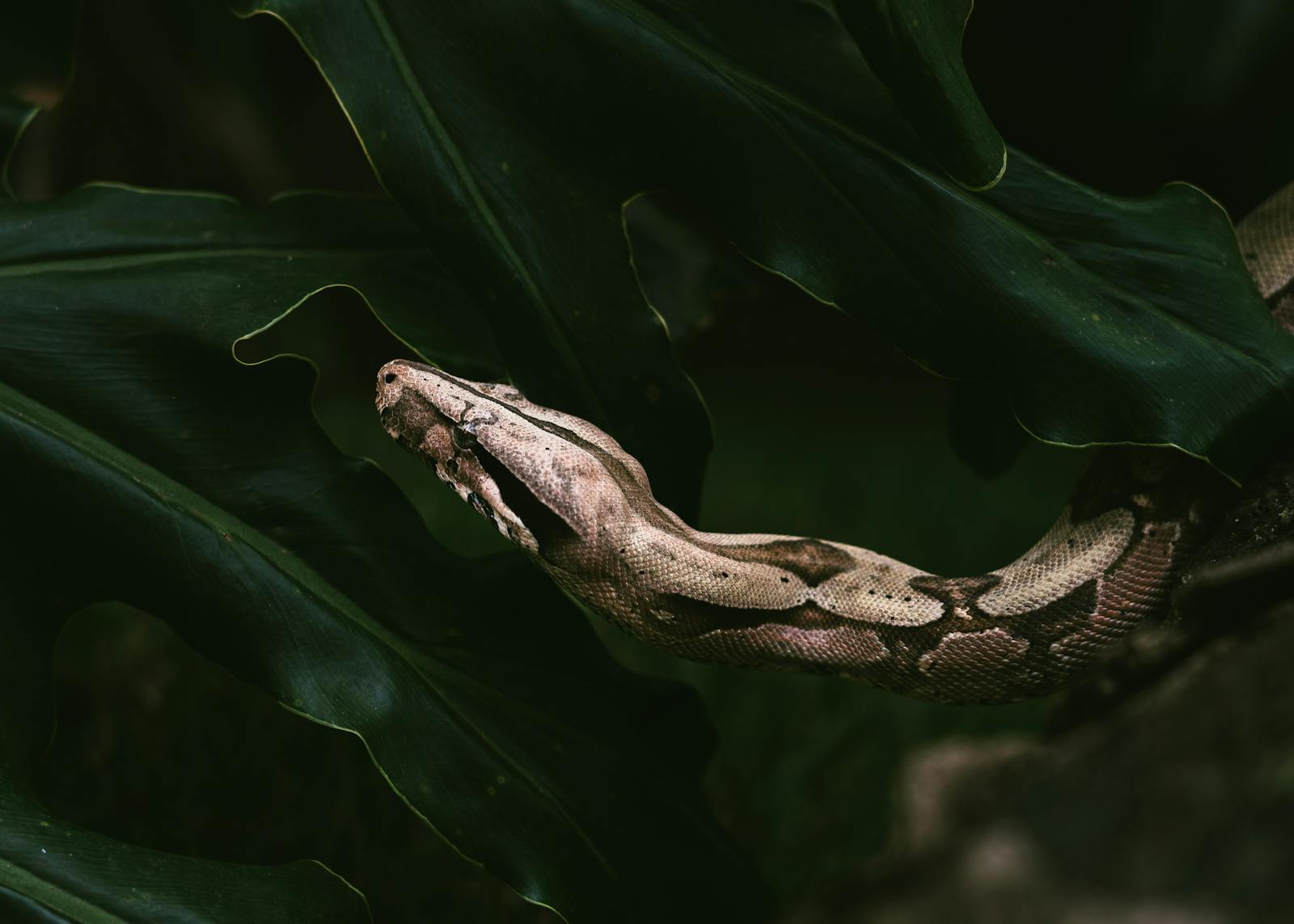The Amazon Rainforest stands as Earth’s most biodiverse ecosystem, harboring countless species that showcase nature’s artistic brilliance. Among these natural wonders, one serpent reigns supreme in its chromatic splendor—the rainbow boa (Epicrates cenchria). While many snakes display camouflage coloration to blend with their surroundings, the rainbow boa breaks this convention with a dazzling array of colors that shimmer and shift with every movement. This remarkable reptile has fascinated scientists, wildlife enthusiasts, and indigenous peoples alike for generations. Its iridescent scales create a living rainbow effect that must be seen to be believed, earning it the well-deserved title of the Amazon’s most colorful snake. Let’s explore this magnificent creature in all its prismatic glory.
The Rainbow Boa: Nature’s Living Prism
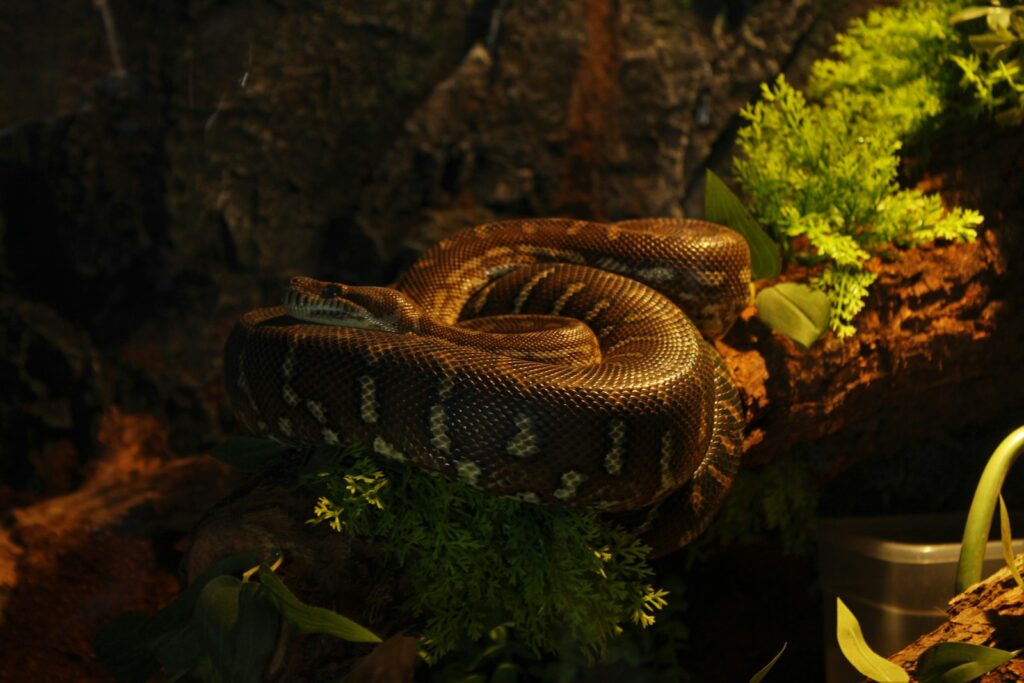
The rainbow boa (Epicrates cenchria) stands as the undisputed champion of colorful snakes in the Amazon Rainforest, showcasing an extraordinary iridescent quality that makes it appear as though rainbows dance across its scales. This medium-sized constrictor typically grows to lengths between 4 and 6 feet, making it substantial but not among the largest Amazonian serpents. What truly distinguishes this snake isn’t just a single vibrant color but rather its remarkable ability to reflect and refract light, creating a shifting spectrum of hues that include reds, oranges, blues, greens, and purples. The scientific explanation for this phenomenon involves microscopic ridges on the snake’s scales that break light into its component colors, similar to how a prism works, resulting in one of nature’s most spectacular light shows.
The Science Behind the Rainbow Effect
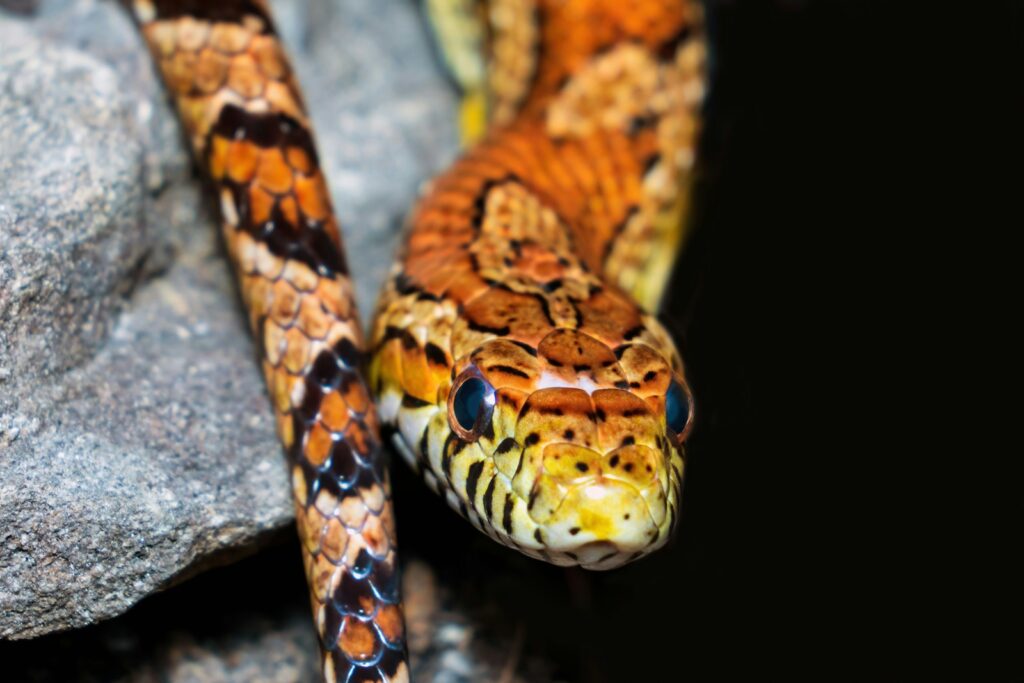
The rainbow boa’s extraordinary coloration isn’t produced by pigments but results from a fascinating structural adaptation called iridescence. Each scale contains microscopic ridges with precisely spaced grooves that diffract light waves, separating white light into its component wavelengths—similar to how water droplets create a rainbow after rainfall. This structural color appears most vibrant when the snake is in direct sunlight or under strong lighting, allowing observers to witness the full spectrum of colors shifting across its body with even the slightest movement. Remarkably, this iridescence occurs on top of the snake’s base coloration, which typically consists of a reddish-brown background with dark oval patterns running along its back. The combination of this base pattern with the overlaying iridescent effect creates a visual complexity unmatched by any other Amazonian serpent.
Habitat and Distribution
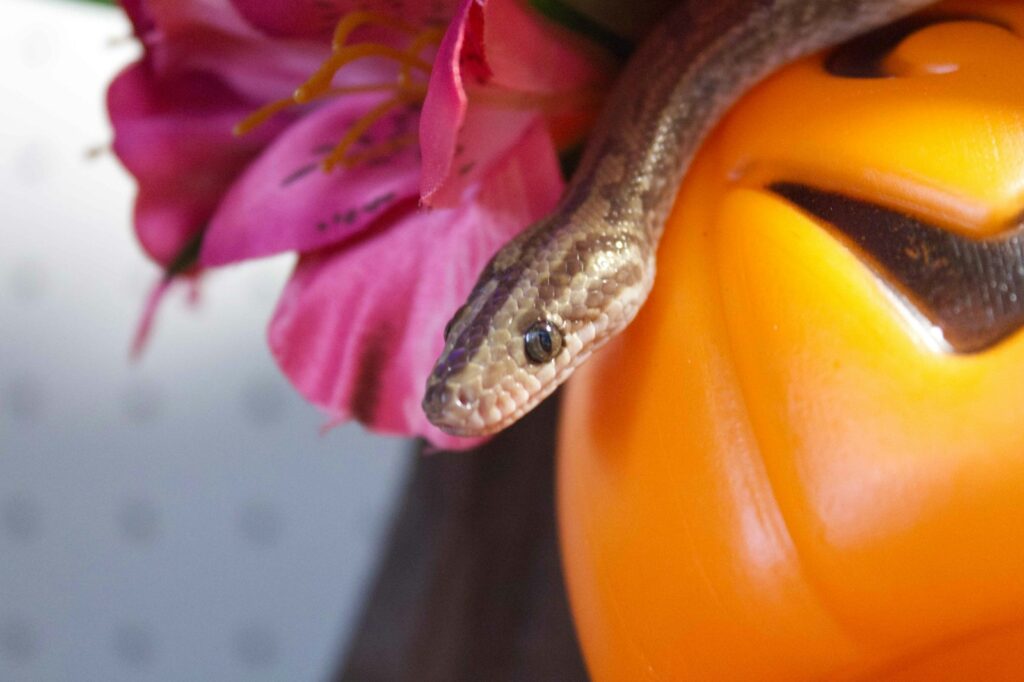
The rainbow boa thrives throughout much of the Amazon Basin, with various subspecies distributed across Brazil, Colombia, Ecuador, Peru, Bolivia, Venezuela, Guyana, French Guiana, and Suriname. These adaptable snakes occupy diverse microhabitats within the rainforest, from terrestrial forest floors to semi-arboreal environments where they can occasionally be found draped across branches. Rainbow boas demonstrate a particular preference for humid environments near water sources, including riverbanks, swamps, and seasonally flooded forests where their prey tends to concentrate. Their ability to navigate both terrestrial and arboreal settings grants them access to a wider range of prey and shelter options than strictly ground-dwelling serpents. Interestingly, rainbow boas can sometimes be found in agricultural areas and disturbed forests at the rainforest edge, showcasing their adaptability to environments influenced by human activity.
Hunting and Feeding Behavior
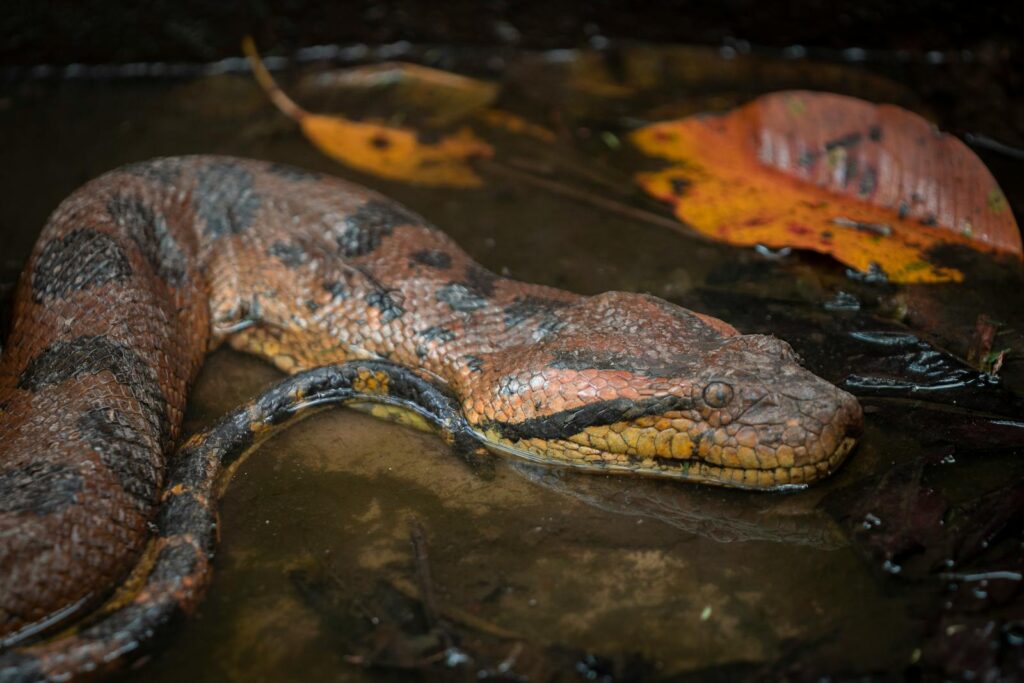
Rainbow boas are quintessential ambush predators, employing their remarkable patience and camouflage to secure meals despite their flashy appearance. These snakes primarily hunt during evening and nighttime hours, when their prey is active but their iridescent qualities are less visible to both predators and potential meals. The rainbow boa’s diet consists mainly of small mammals like rodents, but they also consume birds, lizards, amphibians, and occasionally other snakes when opportunity allows. Like all boas, they employ constriction as their killing method—wrapping powerful coils around prey and tightening with each exhale until the victim succumbs to circulatory failure rather than crushing or suffocation as commonly misunderstood. Following a successful kill, the rainbow boa can consume prey seemingly too large for its body thanks to a remarkable ability to dislocate its jaw, allowing it to swallow animals whole in a process that can sometimes take hours to complete.
Reproduction and Life Cycle
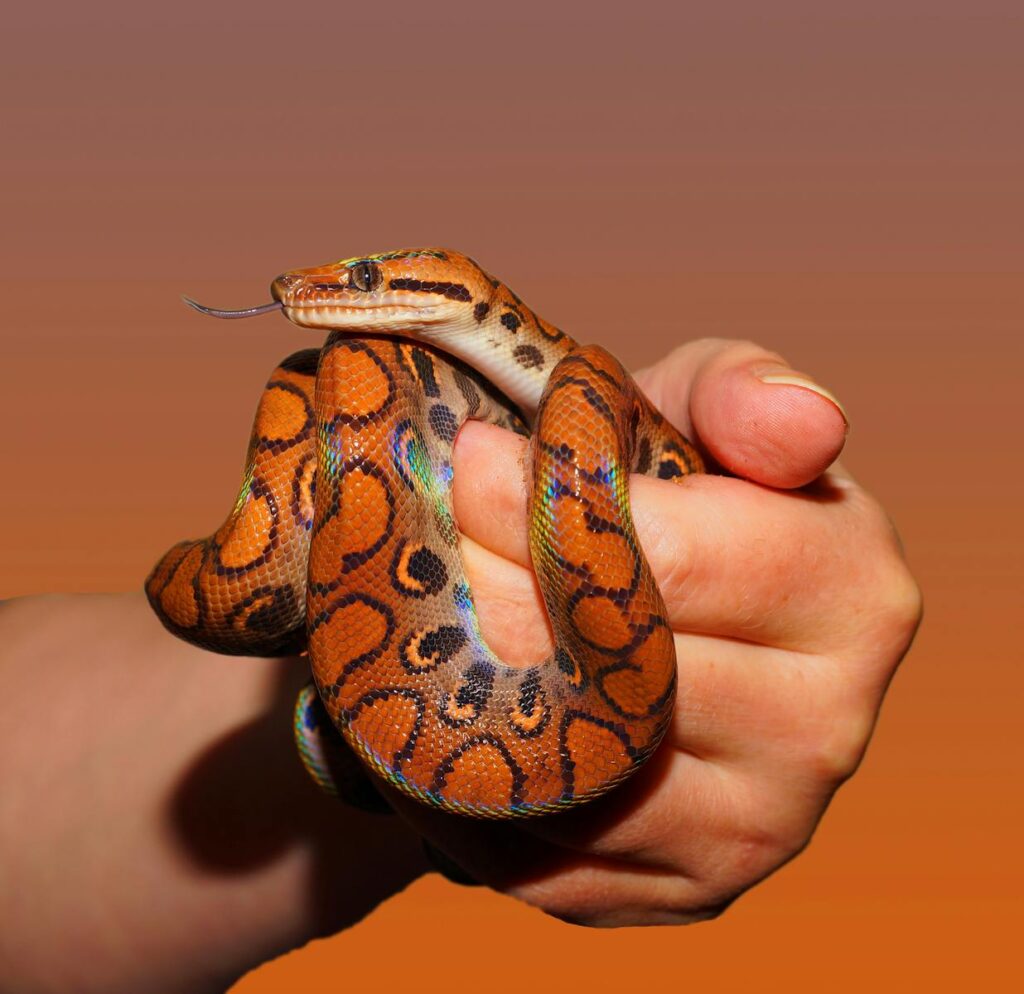
Unlike many snake species that lay eggs, rainbow boas are viviparous, meaning females give live birth to fully formed young after carrying them internally for approximately 4-6 months. A typical rainbow boa litter consists of 5-12 neonates, each measuring around 15-20 inches in length and displaying the species’ characteristic iridescence from birth, albeit in a somewhat subdued form compared to adults. Mating typically occurs during the rainforest’s wet season when resources are abundant, with females capable of storing sperm for extended periods to ensure optimal timing for birth. Young rainbow boas are immediately independent, receiving no parental care and beginning to hunt small prey such as lizards, frogs, and juvenile rodents within days of birth. These snakes reach sexual maturity between 2-4 years of age and can live 20-25 years in the wild, with captive specimens occasionally surviving past 30 years with proper care.
Adaptations for Survival
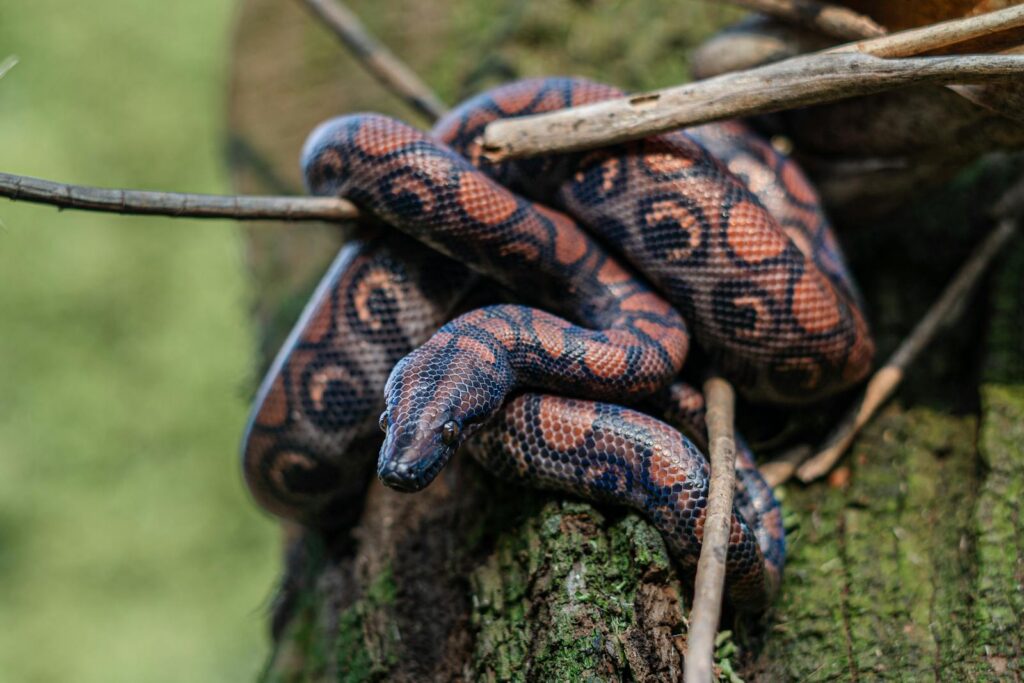
Beyond its stunning coloration, the rainbow boa possesses numerous adaptations that ensure its survival in the competitive Amazonian ecosystem. This species has heat-sensitive pits along its mouth that function as a rudimentary infrared detection system, allowing it to locate warm-blooded prey even in complete darkness or when hidden in burrows. Rainbow boas possess incredibly muscular bodies relative to their size, enabling them to exert tremendous constricting pressure when subduing prey that might otherwise escape. Their skin contains specialized microscopic structures that help repel water while simultaneously reducing friction, allowing these snakes to move efficiently through the humid, sometimes waterlogged environments of the rainforest. Perhaps most remarkable is the rainbow boa’s respiratory system, which includes a specialized tube extending from the mouth to the glottis, enabling the snake to breathe while swallowing large prey items—a process that might otherwise cause suffocation in less adapted species.
Defense Mechanisms

Despite its eye-catching appearance, the rainbow boa employs several effective defense strategies against potential predators. When threatened, these snakes typically coil their bodies tightly while hiding their heads, presenting a smaller target while simultaneously displaying their most colorful scales, which may serve as aposematic (warning) coloration to deter predators. If further provoked, rainbow boas may strike repeatedly with closed mouths, delivering harmless but startling bluff strikes designed to create an opportunity for escape. For persistent threats, these normally docile snakes can deliver painful bites, though they lack venom and rarely cause serious injury to larger animals. As a final defense mechanism, rainbow boas can release a foul-smelling musk from their cloaca, creating an unpleasant olfactory deterrent that discourages handling by predators sensitive to smell, including many mammals and birds of prey that might otherwise consider the snake a potential meal.
Cultural Significance
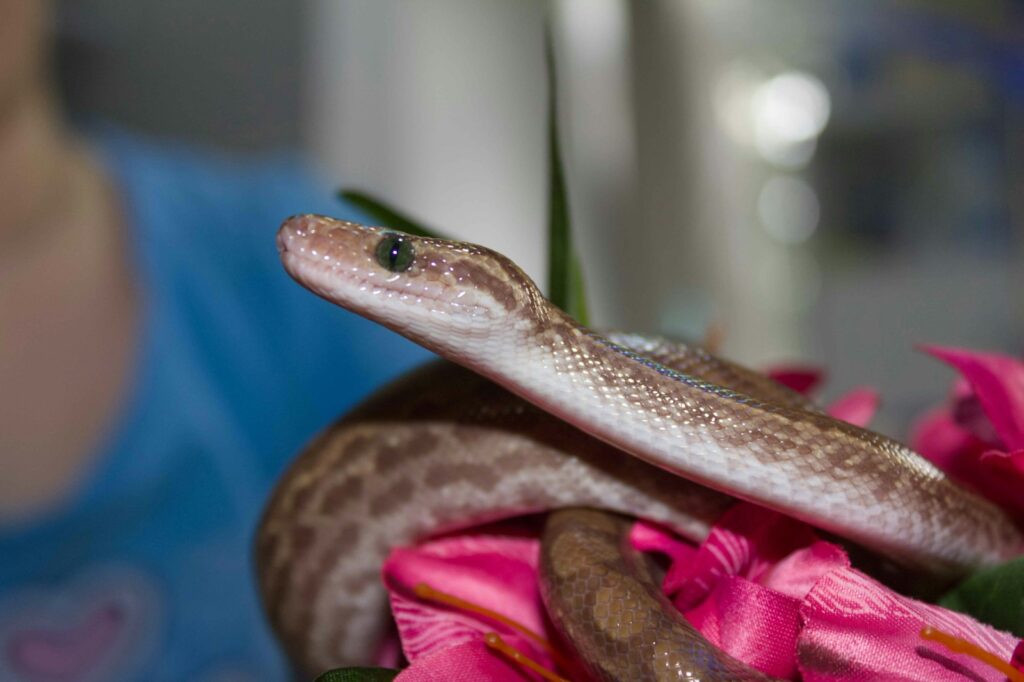
Indigenous Amazonian communities have long incorporated the rainbow boa into their cultural mythology and traditional medicine practices. Many tribes consider the snake a sacred creature connected to water spirits and rainfall, with some creation myths describing how the first rainbow appeared when a giant rainbow boa curved across the sky. Shamanic traditions in certain regions view encounters with these colorful serpents as spiritually significant omens, often associated with healing abilities or visionary experiences. The rainbow boa’s shed skin has been traditionally used in various ceremonial contexts, including headbands for tribal leaders and ritualistic offerings believed to bring favorable weather for crops. Perhaps most interesting is how some communities harvest small amounts of rainbow boa fat for use in traditional remedies, particularly for treating skin conditions and reducing the appearance of scars—a practice that modern scientific investigation has found contains compounds with mild anti-inflammatory properties.
Threats and Conservation Status
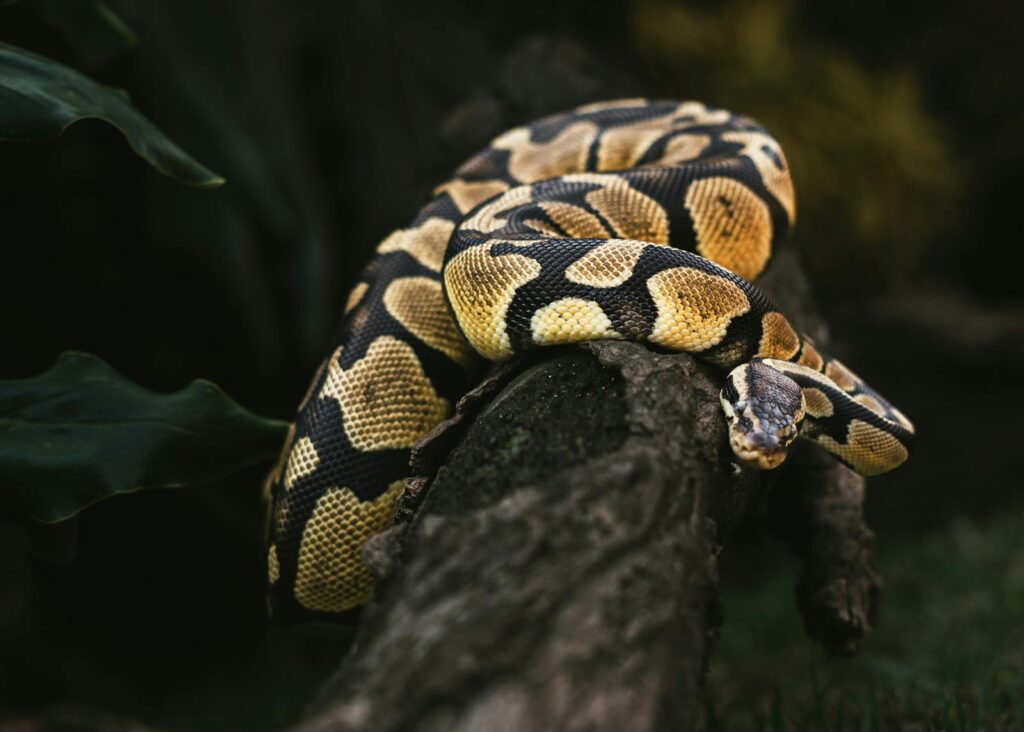
Despite their beauty and adaptability, rainbow boas face numerous threats in their native Amazonian habitat. Deforestation represents the most significant challenge, with vast tracts of rainforest cleared annually for agriculture, logging, and development, fragmenting populations and destroying crucial microhabitats. The exotic pet trade has placed additional pressure on wild populations, with collectors specifically targeting rainbow boas for their spectacular coloration, though captive breeding programs have somewhat reduced this impact in recent decades. Climate change poses a more insidious threat, as these moisture-dependent reptiles may struggle to adapt to shifting rainfall patterns and increasing temperatures that could disrupt their reproductive cycles. The International Union for Conservation of Nature (IUCN) currently lists the rainbow boa as “Least Concern” overall, though certain subspecies and isolated populations face greater threats, with conservation efforts focusing on habitat protection and sustainable management practices within indigenous territories where these snakes often find their last refuges.
Scientific Research and Discoveries
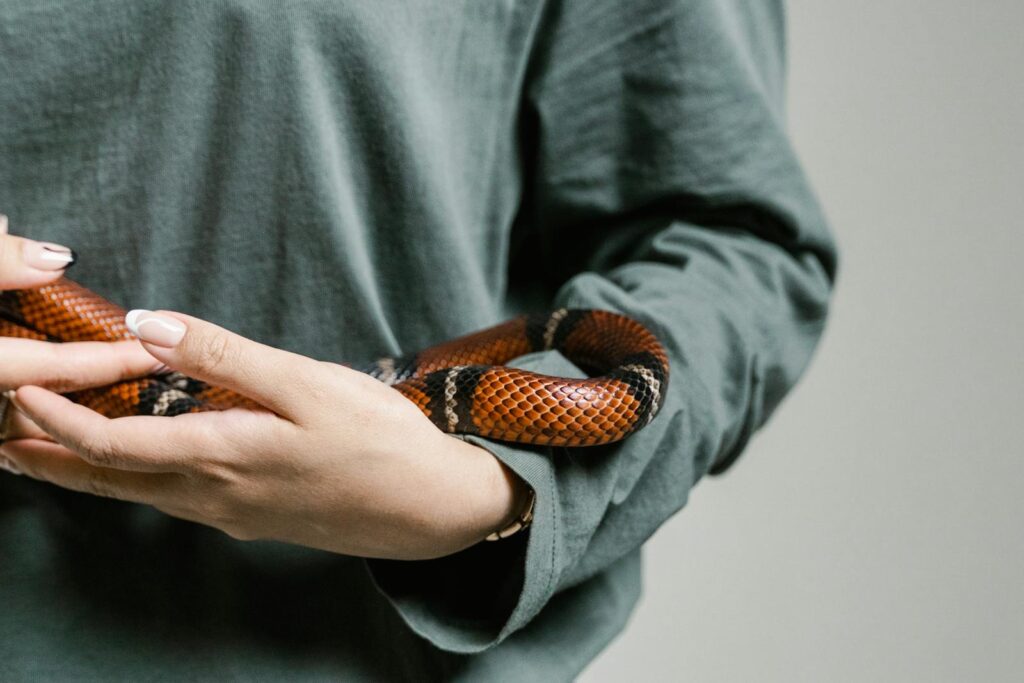
The rainbow boa continues to fascinate researchers across multiple scientific disciplines, yielding important discoveries with applications beyond herpetology. Biomimicry engineers study the microscopic structures of rainbow boa scales to develop new photonic materials with potential applications in optical technologies, including non-fading color displays and anti-counterfeiting measures. Medical researchers have identified compounds in rainbow boa saliva with anticoagulant properties that could inform the development of new blood-thinning medications with fewer side effects than current options. The snake’s thermal sensing abilities have inspired advances in infrared detection technology, with artificial sensors modeled after the heat-sensitive pits found along the boa’s mouth. Perhaps most surprising has been research into the rainbow boa’s remarkable ability to heal from significant injuries without infection or scarring, which has led to investigations into antimicrobial peptides present in their skin that could potentially address antibiotic-resistant bacterial infections in humans.
Comparing the Rainbow Boa to Other Colorful Amazonian Snakes
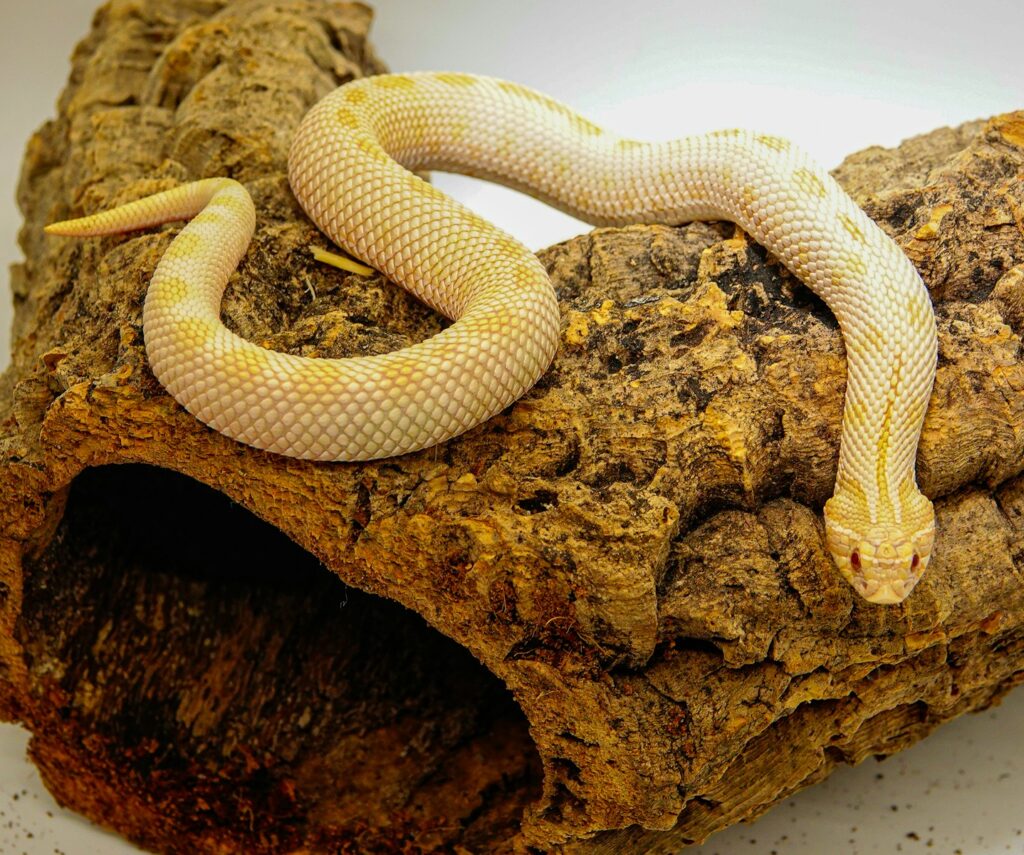
While the rainbow boa claims the title of the Amazon’s most colorful snake, several other serpents deserve honorable mentions for their striking appearance. The emerald tree boa (Corallus caninus) displays a stunning monochromatic green with white vertebral markings that, while less varied in color than the rainbow boa, appears almost impossibly vibrant against the rainforest canopy. The coral snake (Micrurus species) exhibits the classic warning pattern of red, yellow/white and black bands that signal its highly venomous nature—a stark contrast to the harmless rainbow boa. The parrot snake (Leptophis ahaetulla) sports a brilliant green body with a striking yellow belly, specialized for life among the foliage where it hunts lizards and tree frogs. What distinguishes the rainbow boa from these competitors in the colorful snake category is not just the variety of its colors but the unique structural iridescence that creates a living rainbow effect that shifts with perspective and lighting conditions—a dynamic quality unmatched by any fixed pigmentation pattern found in other Amazonian serpents.
Observing Rainbow Boas in the Wild
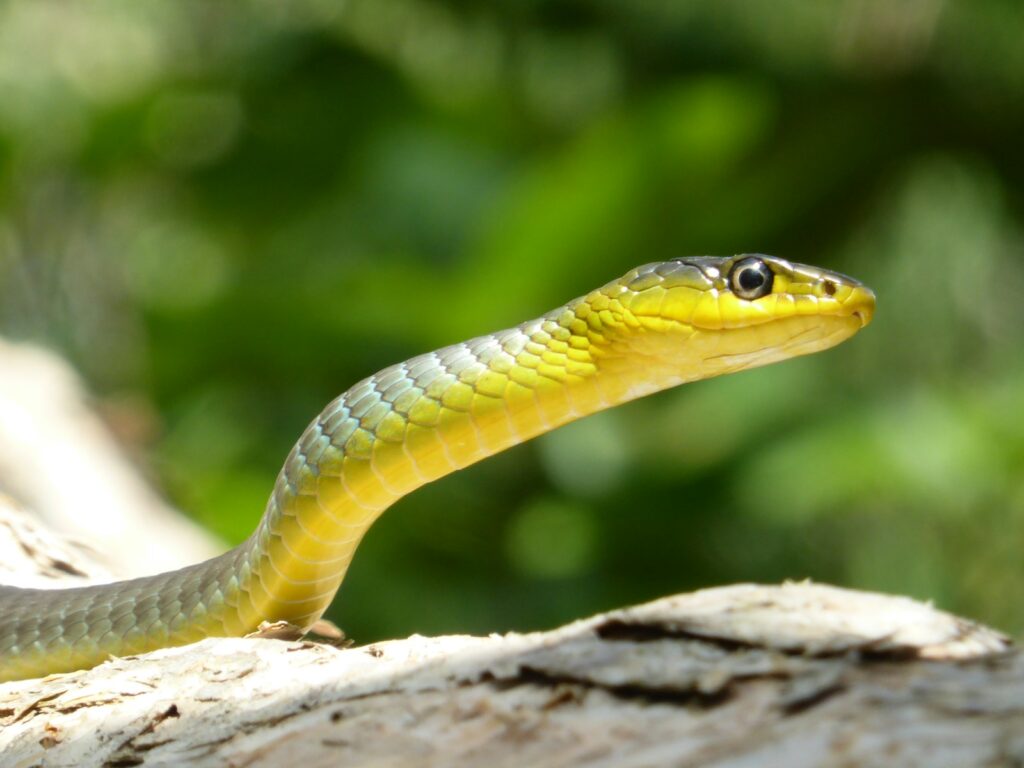
Spotting a rainbow boa in its natural habitat requires patience, knowledge, and often the expertise of indigenous guides who understand the snake’s behavior patterns. The best opportunities for observation typically come during early morning or late afternoon when these primarily nocturnal creatures may still be active but visible in daylight that showcases their iridescent qualities. Riverboat expeditions offer particularly good chances for sightings, as rainbow boas frequently rest on branches overhanging water bodies where they hunt for fish and amphibians. During the dry season, these snakes often concentrate around remaining water sources, increasing the likelihood of encounters for wildlife enthusiasts willing to venture into more remote areas with professional guides. Photographers hoping to capture the rainbow boa’s spectacular coloration should use polarizing filters to reduce glare and enhance the visibility of the iridescent effect, while naturalists should always maintain a respectful distance both for personal safety and to minimize stress to these magnificent creatures.
Captive Care and Ethical Considerations
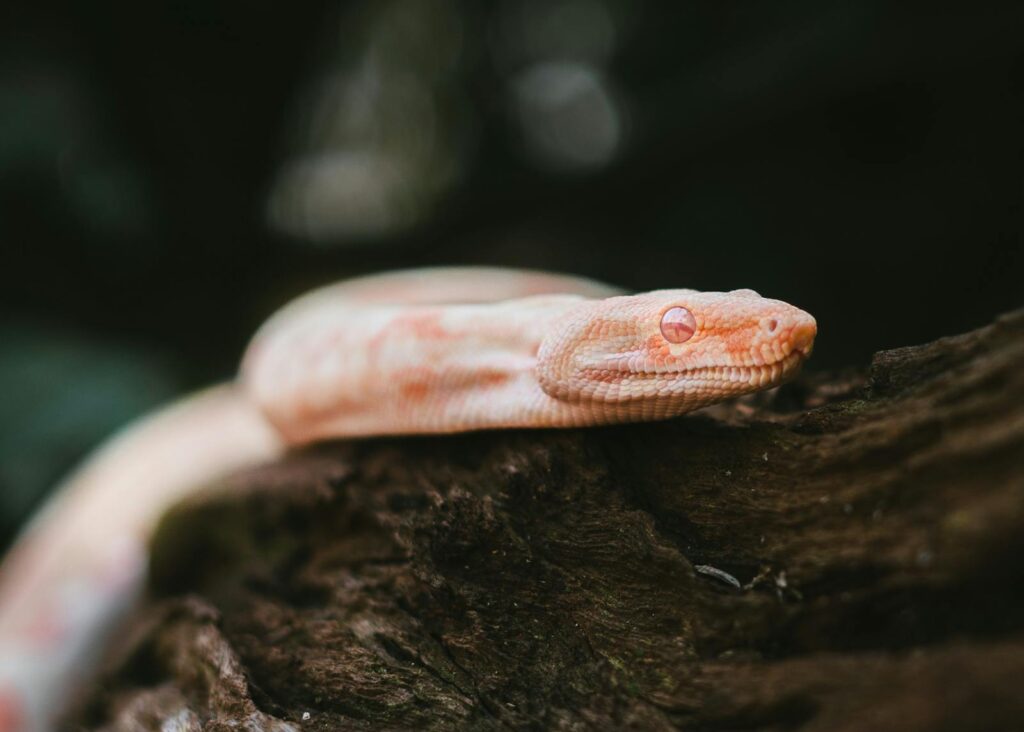
Rainbow boas have become popular in the exotic pet trade, raising important ethical questions about their captivity and care requirements. Responsible ownership demands recreating their specific microhabitat needs, including precise humidity levels between 70-80%, temperature gradients from 75-85°F, and appropriate terrarium dimensions allowing both terrestrial movement and climbing opportunities. Ethical considerations should guide potential owners to purchase only captive-bred specimens with documented origins rather than wild-caught individuals that contribute to population declines and may carry parasites or diseases. Rainbow boas typically live much longer in captivity than many pet owners anticipate—often exceeding 20 years—requiring a long-term commitment beyond what many enthusiasts initially consider. Most importantly, potential keepers should research local laws thoroughly, as many jurisdictions restrict or prohibit private ownership of exotic reptiles, with violations potentially resulting in confiscation of the animal and significant legal penalties for the owner.
Conclusion

The rainbow boa represents one of nature’s most spectacular achievements in living color. This remarkable serpent, with its iridescent scales creating a living rainbow effect, embodies the incredible biodiversity and evolutionary innovations found within the Amazon Rainforest. From its specialized hunting techniques to its cultural significance among indigenous peoples, the rainbow boa occupies a unique position both ecologically and symbolically. As threats to the Amazon continue to mount, the preservation of this spectacular species and its habitat becomes increasingly urgent. The rainbow boa reminds us that sometimes nature’s most extraordinary creations aren’t found in the largest or most dangerous creatures, but in those that demonstrate beauty so remarkable it seems almost magical. In protecting these iridescent serpents, we safeguard not just a species but a living masterpiece of evolutionary artistry.

